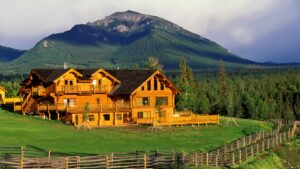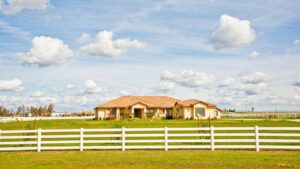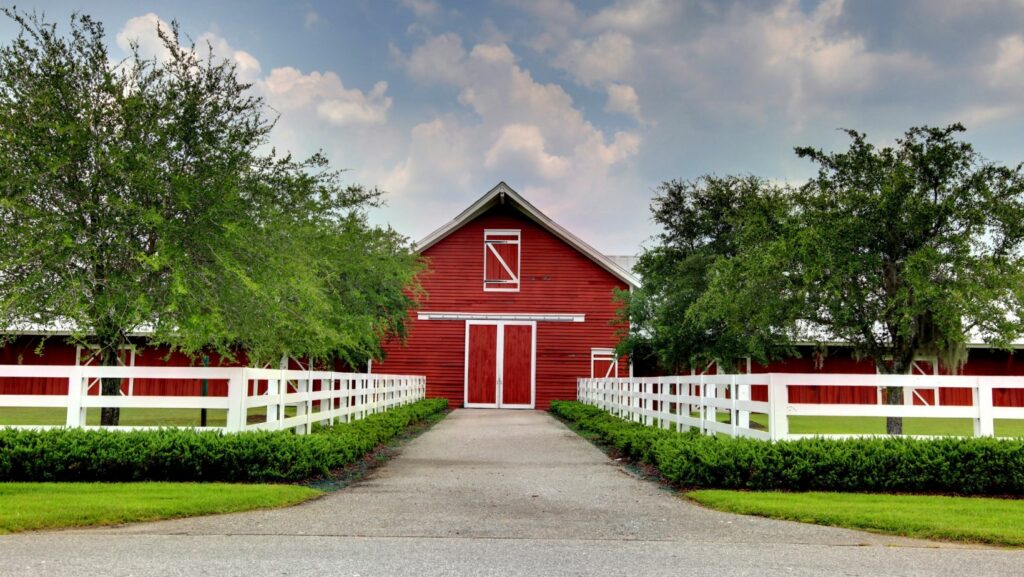When it comes to quintessential American architecture, the ranch style home stands out as a true icon. Born out of the practical needs of the Western United States, it’s a design that’s as functional as it is charming. This article will delve into the roots, characteristics, and enduring appeal of this popular architectural style.
The ranch style, with its sprawling single-story layout and easy indoor-outdoor flow, has captured the hearts of homeowners for decades. But what is it that makes this style so uniquely American, and why does it continue to be a favorite among home buyers today? Let’s embark on a journey to explore the intriguing world of ranch architecture.
Ranch Architectural Style
 Ranch architectural style sports notable characteristics that distinguish it from other styles. Its single-story design, for instance, optimizes livability. Emphasizing practicality, this design ensures maintaining all rooms on a level are less of a chore.
Ranch architectural style sports notable characteristics that distinguish it from other styles. Its single-story design, for instance, optimizes livability. Emphasizing practicality, this design ensures maintaining all rooms on a level are less of a chore.
It’s also known for having an open floor plan. A straightforward layout that combines dining and living spaces eliminates unnecessary walls, aiding easy movement between spaces. This layout intends to connect the interior to the exterior. Large windows and sliding glass doors, often leading to patios, achieve this purpose.
Another characteristic feature is the extensive use of natural materials. Brick, wood, or stucco often form the dominant part of a ranch home’s exterior, further emphasizing the style’s connection with nature. Additionally, the ubiquitous attached garage, a nod to the post-war car culture, cements ranch homes into the fabric of American suburban landscapes.
Common Materials Used in Ranch Style Homes
 Ranch homes typically incorporate fundamental, natural materials that add to their simplistic charm. Brick presents an elemental component, providing durability and aesthetic appeal. Homes exhibit extensive brickwork, cladding exterior walls and complementing interior spaces with brick fireplaces. Another component is wood, often employed in open-beam ceilings, interior walls, and shuttered windows. Its use lends warmth and texture to ranch homes.
Ranch homes typically incorporate fundamental, natural materials that add to their simplistic charm. Brick presents an elemental component, providing durability and aesthetic appeal. Homes exhibit extensive brickwork, cladding exterior walls and complementing interior spaces with brick fireplaces. Another component is wood, often employed in open-beam ceilings, interior walls, and shuttered windows. Its use lends warmth and texture to ranch homes.
Stucco forms an alternative choice for exterior walls, adding diversity in texture and color. This plastering material, applied in several layers, boosts the homes’ weather resistance. For roofing, asphalt shingles form the standard choice, due to their resistance to weather conditions and ease of installation. Further, large windows and sliding glass doors use glass liberally, promoting indoor-outdoor connectivity—an intrinsic feature of ranch homes.
Influence of Ranch Style on Modern Architecture
 Ranch style’s impact extends beyond suburban landscapes, marking its hold on modern architecture. Architects incorporate its open floor concept, a standout feature promoting fluidity between rooms. Current design practices adopt this pattern, favoring spaces that facilitate movement and social connection. Similar to the tradition of using brick, wood, and stucco, modern architects harness materials that not only ensure longevity but also resonate with aesthetics and environmental harmony.
Ranch style’s impact extends beyond suburban landscapes, marking its hold on modern architecture. Architects incorporate its open floor concept, a standout feature promoting fluidity between rooms. Current design practices adopt this pattern, favoring spaces that facilitate movement and social connection. Similar to the tradition of using brick, wood, and stucco, modern architects harness materials that not only ensure longevity but also resonate with aesthetics and environmental harmony.
Ranch’s signature large windows find favor in modern buildings that prioritize natural light and indoor-outdoor connectivity. Asphalt shingles’ practicality inspired roofing solutions that are both durable and visually pleasing. The essences of simplicity and organic connection embodied in ranch architecture indeed shaped contemporary design norms. Hence, it’s no exaggeration to say that the Ranch’s architectural style influence continues to shape modern architecture.
Renovating Ranch Style Homes
The ranch architectural style’s influence can’t be overstated. Architects have found inspiration in its open floor plans, fostering social connection and movement. The use of durable and aesthetically pleasing materials like brick, wood, and stucco remains prevalent, thanks to the ranch style’s enduring appeal. Large windows for natural light and indoor-outdoor connectivity, as well as the practicality of asphalt shingles, are further testaments to the ranch style’s impact. The simplicity and organic connection of ranch architecture have not only shaped but continue to influence modern design principles. It’s clear that the ranch style’s legacy is ingrained in contemporary architecture, and renovating ranch style homes can be a fruitful endeavor for homeowners and architects alike. The ranch style’s evolution demonstrates its adaptability and relevance in today’s architectural landscape.

